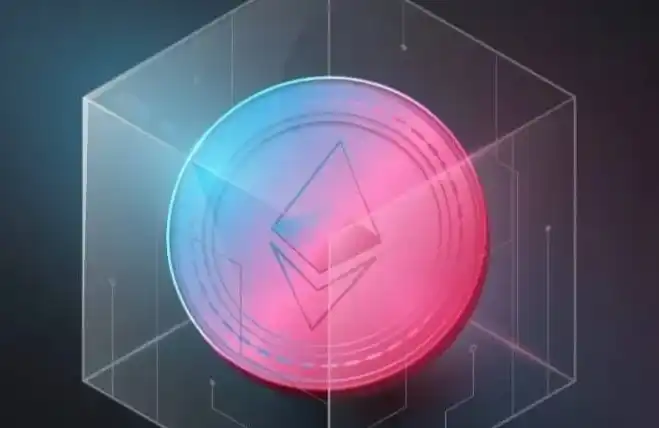Eclipse's Strategic Shift from Infrastructure to Apps: A High-Risk, High-Reward Play in a Changing Blockchain Market
- Eclipse Labs shifts from blockchain infrastructure to product-led app development, reflecting industry-wide focus on user value over speculative tech. - CEO Sydney Huang's "breakout app" strategy follows 65% token value drop and workforce cuts, aiming to drive adoption through real-world utility. - The pivot mirrors trends seen in dYdX and Uniswap but faces risks from crowded app markets, regulatory uncertainty, and reliance on single-product success. - Investors must monitor user growth, token utility e
The blockchain industry is at a crossroads. For years, infrastructure projects dominated the narrative, promising to solve scalability and interoperability challenges through novel consensus mechanisms, rollups, and virtual machines. But as the market matures and token speculation wanes, the focus is shifting toward product-led growth—delivering tangible value to end users. Eclipse Labs' recent pivot from infrastructure to application development is a case study in this transition, but whether it succeeds depends on its ability to navigate a crowded, high-stakes landscape.
The Strategic Shift: From “Infrastructure for Others” to “Apps for Users”
Eclipse, once known as “Solana on Ethereum” for its Ethereum-connected rollup running Solana's Virtual Machine (SVM), has undergone a dramatic transformation. In August 2025, the company announced a 65% workforce reduction and a leadership change, with Sydney Huang (formerly 0xSydney) taking over as CEO from Vijay Chetty (0xLitquidity). The new strategy: build in-house applications on Eclipse's Layer 2 (L2) platform to drive user adoption, rather than relying on external developers to build on its infrastructure.
This pivot follows a 65% decline in the value of Eclipse's native token, ES, since its July 2025 token generation event (TGE). The drop exposed the fragility of token-driven models in a post-hype market, where investors now demand real utility over speculative narratives. Huang's public statements emphasize a “product-first” approach, with the goal of creating a “breakout application” that demonstrates the full potential of Eclipse's L2 infrastructure.
Market Context: The Rise of Product-Led Blockchain Strategies
Eclipse's shift reflects a broader industry trend. In 2025, blockchain companies are increasingly pressured to deliver user-facing products that rival Web2 in performance and accessibility. Projects like dYdX (now a standalone app) and Uniswap (which launched its own governance token) have shown that user-centric models can thrive, but they also highlight the risks of competing in a saturated app market.
The key question for Eclipse—and for investors—is whether a product-led strategy can sustain long-term value in a sector still grappling with regulatory uncertainty and technical complexity. Unlike infrastructure projects, which can scale passively, apps require continuous innovation, marketing, and user retention. For Eclipse, success hinges on its ability to build an application that not only leverages its L2's speed and security but also solves a real-world problem for a mass audience.
Risks and Rewards: A High-Stakes Bet
Eclipse's strategy is undeniably high-risk. The workforce cuts, while intended to streamline operations, risk losing critical expertise in engineering and product development. Additionally, the company's reliance on a single “breakout app” mirrors the all-or-nothing approach of many Web3 startups, where one misstep can derail the entire vision.
However, the potential rewards are equally significant. If Eclipse's app gains traction, it could create a flywheel effect: users attract developers, developers enhance the app, and the app drives demand for Eclipse's infrastructure. This self-reinforcing cycle is the holy grail of product-led growth in blockchain. The company's $65 million Series A funding (led by Placeholder and Hack VC) provides a buffer, but execution remains the wildcard.
Evaluating Long-Term Viability
For investors, the critical metric is not just the ES token's price but the health of Eclipse's ecosystem. A product-led strategy requires measurable user growth, active on-chain activity, and a clear path to monetization. Eclipse's roadmap—though vague—hints at a Q2 2025 mainnet launch and a testnet already underway. These milestones will be pivotal in assessing whether the company can deliver on its vision.
Comparisons to other blockchain projects can provide context. For example, shows how user-centric innovation can drive long-term value, but also the volatility inherent in high-growth sectors. Eclipse's challenge is to replicate this trajectory in a market where trust is scarce and competition is fierce.
Investment Advice: A Cautious Bet with Clear Conditions
Eclipse's pivot is a bold move that aligns with the industry's shift toward utility-driven models. However, investors should approach this opportunity with caution. Key conditions for success include:
1. Product Execution: The app must solve a real problem and differentiate itself from existing solutions.
2. Token Utility: The ES token must evolve from a speculative asset to a functional component of the ecosystem (e.g., governance, staking, or fee discounts).
3. Regulatory Clarity: The project must navigate evolving regulations, particularly in the U.S., where SEC scrutiny of crypto tokens remains a risk.
For those willing to take the risk, a small position in Eclipse could be justified as part of a diversified portfolio focused on blockchain innovation. But the stakes are high: if the app fails to gain traction, the ES token may struggle to recover, and the company's infrastructure could become obsolete.
Conclusion
Eclipse's strategic shift is emblematic of a broader industry reckoning. As the crypto market moves beyond the hype of token sales and speculative infrastructure, the winners will be those who can deliver real value to users. Whether Eclipse succeeds depends on its ability to execute a product-led strategy in a space where execution is often harder than innovation. For now, the market is watching—and the next six months will be critical in determining whether this high-risk, high-reward play pays off.
Disclaimer: The content of this article solely reflects the author's opinion and does not represent the platform in any capacity. This article is not intended to serve as a reference for making investment decisions.
You may also like
Global Cryptocurrency Turmoil: G20 Regulatory Warnings, New Crypto Bank Approved, and US-China Tensions Shake the Market
From a $1.9 billion crypto collapse to new stablecoin and tokenization projects, global markets are struggling amid escalating US-China trade tensions and increasing regulatory pressure.
Brevis receives collective praise from the Ethereum community—Is ZK finally becoming practical?
Brevis has achieved proof for 99.6% of Ethereum blocks within 12 seconds, with an average of only 6.9 seconds, using just 64 RTX 5090 GPUs.

From SDK to "Zero-Code" DEX Building: Orderly's Three-Year Masterpiece
Orderly ONE proves that sticking to one thing and doing it to the extreme is the right approach.

The Ethereum community collectively gives a thumbs up: Has ZK technology finally moved from the lab to production-grade tools?
Brevis has achieved proof for 99.6% of Ethereum blocks within 12 seconds, with an average time of only 6.9 seconds, using just 64 RTX 5090 GPUs.
